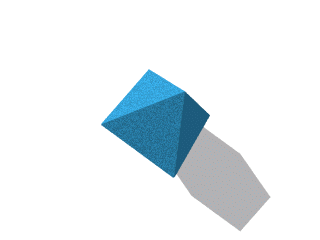
Mondrian wanted to create self-contained art, art with no connection whatsoever with material reality. He did his best to depict something completely abstract and pure, something that had neither form, depth or other normal properties. He especially did his best not to create the impression that the artwork continued beyond the frame; he wanted a picture where the picture was all the information. He finally achieved it in his late square-rectangle compositions with only the primary colors, black and white.
On the other hand, I love to create worlds, to suggest windows into alternate worlds where things go on even after the window has been closed ("where does the windows go when my computer dies?"). I want to create self-consistent systems that are "self-supporting" like Mondrians compositions, but also more universe-like than concept-like.
This picture started out as a kind of joke, when I combined a Mondrian-object I had recreated with the monolith from 2001. A viewer looking at a portrait? For other forms of beings Mondrians paintings might be still life paintings filled with everyday meaning. Gradually the gallery grew up. It is not clear if the monolith is a spectator or perhaps an art object - didn't the earthlings place the moon monolith on the UN plaza?
But to make a gallery more paintings are needed. I looked for suitable pictures and found one - the rendering itself. It was a simple matter to map it onto a picture. To create balance I needed a second picture to the left. The first was a depiction of the whole picture. The Mondrian painting in the middle was itself. So I wanted something that depicted the underlying reality of the renderer, and I choose a height field used in the Kindergarten picture - one can see the bits that make up computer graphics. It also provided some green - I wanted to balance the colors.
So now this picture depicts itself, a world where monoliths watch abstract (or concrete?) art and the information used in rendering - several levels at once. Hofstadter would be proud.
